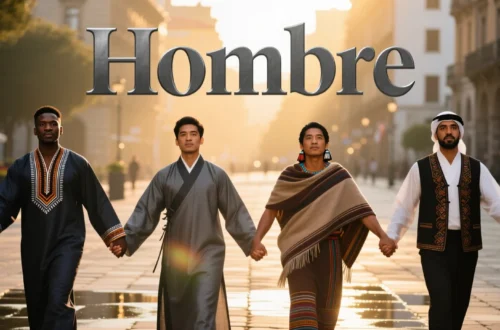Years ago, while traveling in Italy, I found myself at a bustling café where a waiter eagerly offered me another espresso. Wanting to decline politely but unsure of the right word, I stumbled through a smile and a headshake, only to receive a puzzled look.
That moment taught me the power of saying “no” in the local tongue—it’s more than a word; it’s a bridge to cultural respect. Across the world, the way people say “no” reflects their values, from direct refusals to gentle deflections. Let’s explore how this simple word is expressed in various languages and cultures, revealing the universal need to set boundaries with grace.
Reference Table: “No” in Different Languages
| Language | Word/Phrase | Cultural/Linguistic Insight |
|---|---|---|
| French | Non | A straightforward refusal, often softened with a polite tone. |
| Spanish | No | Direct yet versatile, used in both casual and formal settings. |
| Italian | No | Simple and clear, often paired with expressive gestures. |
| German | Nein | Firm and direct, reflecting German cultural straightforwardness. |
| Mandarin | Bù (不) | A concise negation, often contextual, paired with polite phrases. |
| Hindi | Nahin | A soft yet firm refusal, often accompanied by a head shake. |
| Japanese | Iie (いいえ) | Polite and formal, often avoided in favor of indirect refusal. |
| Korean | Ani (아니) | Casual, with polite forms like “aniyo” used in formal settings. |
| Arabic | La (لا) | A clear refusal, often softened with phrases like “shukran” (thank you). |
| Swahili | Hapana | A polite yet firm term, used widely in East African communities. |
| Zulu | Cha | Short and direct, often used with a respectful tone. |
| Yoruba | Rárá | A gentle refusal, sometimes paired with explanations. |
| Maori | Kāo | A straightforward term, often used with a calm demeanor. |
| Hawaiian | ʻAʻole | A soft refusal, reflecting the culture’s emphasis on harmony. |
| Cherokee | Tla | A concise negation, used respectfully in community settings. |
European Languages: Balancing Directness and Politeness
In Europe, saying “no” varies from blunt to nuanced, shaped by cultural norms. For instance, in French, “non” is direct but often softened with a smile or phrase like “merci, mais non” (thank you, but no). In France, politeness is key, especially in social settings. Similarly, Spanish uses a simple “no,” versatile enough for casual or formal refusals, often paired with a warm tone in Spain or Latin America. In Italian, “no” is clear, often emphasized with expressive hand gestures, reflecting Italy’s animated communication style. Meanwhile, German’s “nein” is firm and unambiguous, aligning with the culture’s value of directness. For example, a Berliner might say “nein” to decline an offer, expecting clarity in return.
Thus, European languages balance directness with courtesy, reflecting cultural priorities from France’s polished etiquette to Germany’s straightforward approach.
Asian Languages: The Art of Subtle Refusal
Asia’s diverse languages offer unique ways to say “no,” often emphasizing harmony. For example, in Mandarin, “bù” is a concise negation, but Chinese speakers often pair it with polite phrases like “xièxiè, bù yòng” (thank you, no need) to maintain face. In Hindi, “nahin” is soft yet firm, often accompanied by a side-to-side head shake in India, signaling refusal without confrontation. Meanwhile, Japanese uses “iie,” but direct refusal is rare; instead, people might say “chotto” (a little) to politely decline. In Japan, preserving harmony is crucial, so refusals are subtle. Similarly, Korean’s “ani” or “aniyo” (more polite) is used carefully, often with apologies to soften the tone. In Arabic, spoken across over 20 countries like Egypt and Morocco, “la” is clear but often followed by “shukran” to maintain respect.
These terms reflect Asia’s focus on politeness, with indirect refusals in Japanese and Korean contrasting the more direct Hindi and Arabic approaches.
African Languages: Respectful and Communal Refusals
In African languages, saying “no” often reflects community values and respect. For instance, Swahili’s “hapana,” used in over 20 countries like Kenya and Uganda, is polite yet firm, often spoken with a calm tone to avoid offense. In Zulu, “cha” is short and direct, common in South Africa, but delivered respectfully, especially to elders. Similarly, Yoruba’s “rárá,” used in Nigeria, is gentle, often paired with explanations to maintain harmony. In African settings, such as a bustling Lagos market, saying “rárá” or “hapana” respectfully declines an offer while preserving relationships, reflecting the continent’s communal ethos.
Indigenous & Island Languages: Harmony in Refusal
Indigenous and island languages emphasize harmony when saying “no.” For example, Maori in New Zealand uses “kāo,” a straightforward term delivered calmly to maintain respect. In Hawaiian, “ʻaʻole” is soft, aligning with the culture’s aloha spirit of peace. Similarly, Cherokee’s “tla” is concise, used respectfully in Native American communities to decline without disrupting bonds. In Samoan, phrases like “leai” are used gently, often with a smile, reflecting Pacific islanders’ communal values. Across these cultures, from Hawaii to the Cherokee Nation, saying “no” prioritizes maintaining relationships, often accompanied by communal gestures.
Cultural Insights: The Evolution of Refusal
The word for “no” has evolved with cultural attitudes toward boundaries. In ancient Latin, “non” was a direct negation, influencing modern Romance languages like French and Spanish. In Arabic, “la” appears in early Islamic texts, shaping its use across the Middle East. Meanwhile, African terms like “hapana” are tied to oral traditions, where refusals were softened to maintain community ties. In Asia, the shift toward indirect refusals, as in Japanese “iie,” reflects historical emphasis on social harmony. These words carry centuries of tradition, from European clarity to Pacific gentleness, showing how refusal balances personal boundaries with cultural respect.
Proverbs and Sayings: Wisdom of Refusal
- French: “Un non ferme vaut mieux qu’un oui faible.” (A firm no is better than a weak yes.) – Emphasizes clear boundaries.
- Hindi: “Na kehna seekho, dil ko sukoon milega.” (Learn to say no, and your heart will find peace.) – Highlights self-care.
- Swahili: “Hapana ya hekima ni bora kuliko ndiyo ya ujinga.” (A wise no is better than a foolish yes.) – Values thoughtful refusal.
- Japanese: “Iie to iu koto wa, kokoro o mamoru koto.” (Saying no protects the heart.) – Reflects emotional balance.
- Yoruba: “Rárá ti o dara ju ìyẹsí ti kò wúlò.” (A good no is better than a useless yes.) – Prioritizes meaningful decisions.
FAQs
Why do some words for “no” sound similar?
Languages with shared roots, like Romance languages (French, Spanish) or Arabic-influenced Swahili, often have similar-sounding negations due to historical exchanges.
What’s the oldest term for “no”?
Latin’s “non” (circa 1st century BCE) is among the earliest recorded, influencing many modern languages.
How do cultures shape saying “no”?
Collectivist cultures (e.g., African, Indigenous) soften refusals to maintain harmony, while individualistic cultures (e.g., European) may favor directness.
Conclusion
From “non” in France to “hapana” in Kenya, the word for “no” reflects a universal need to set boundaries, shaped by cultural nuances. Whether it’s the gentle “iie” in Japan or the firm “nein” in Germany, these terms unite us in asserting our space with respect. Consequently, saying “no” is a powerful act of self-expression, bridging cultures through shared humanity. How do you say “no” in your language, and what does it mean to you? Share your experiences below—we’d love to hear your stories!






